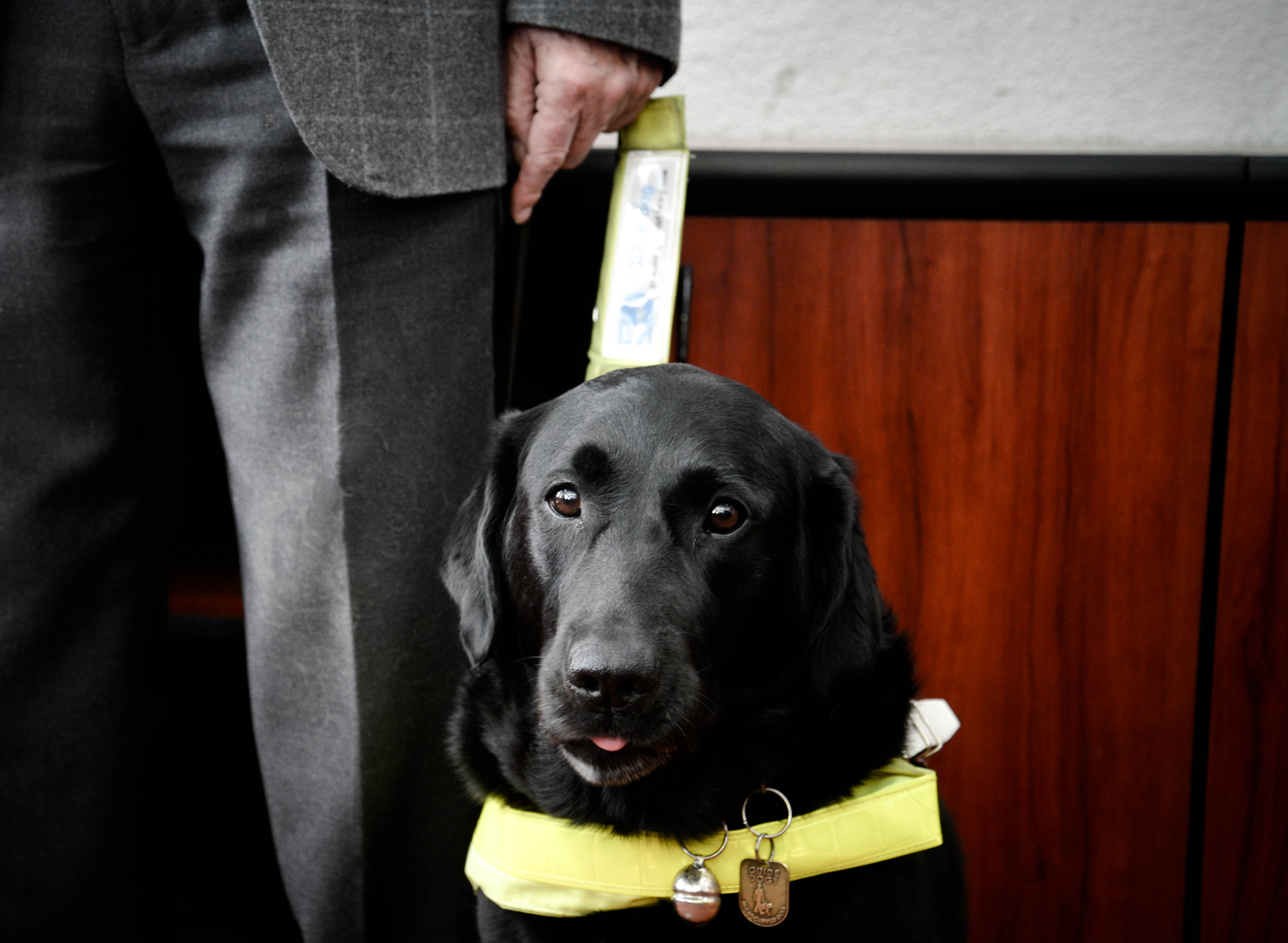
For a person without sight, a guide dog can be a lifesaver. Not only is the animal a constant companion, but it can also retrieve dropped or lost items, help open and close doors and drawers, and bark for help should the owner need it. In short, these dogs provide an essential service to a number of people in need.
Yet the story of Canadian Phil Bobawsky, who was barred from eating at an Edmonton airport with his pooch recently, is one that we continue to hear.
Bobawsky was flying to Calgary with his guide dog Finnegan (Mr. Dressup would be proud), when he decided to grab some food from the Edmonton Eskimos Sports Bar before boarding. Finnegan took him to the spot Bobawsky usually sits in, but before he could place his order a server and someone the man assumed was in charge came up to him and said he couldn’t have the dog in the restaurant despite Finnegan clearly wearing a sign that said, “Guide dogs for the blind.”
After Bobawsky pointed out it was against the Blind Person’s Rights Act in Alberta and the Service Dogs Act, an RCMP officer arrived.
“I said, ‘You realize this is a violation of human rights?’ and he had no idea what I was talking about,” Bobawsky told CBC News. The officer then asked to see Bobawsky’s certification papers, but he refused.
“At that point, they had already gone way over the top so I wasn’t going to co-operate with them,” he said. “I faced it too many times. If someone comes in with a wheelchair, do you ask them for proof they’re disabled?”
According to Bobawsky this isn’t the first time he’s been asked to leave a restaurant with Finnegan—in the past year he’s been refused service three times at Edmonton International Airport alone. He’s received apologies and credits in the past, but this time he’s speaking out because of how he says he was treated.
“When I’m humiliated and not spoken to respectfully, that put me over the edge,” he said. “It’s a fundamental human rights issue.”
Atousa Ghooreichi, a spokesperson for the restaurant, told CBC News that she called Bobawsky to apologize, and revealed that they are working on educating the airport community about service animals in order to prevent future misunderstandings.

A service dog owner’s rights
Although the exact rules vary from province to province, in Canada service animals are not considered pets. That means someone with a service animal is allowed to enter any space accessible to the public with their animal, and should not be discriminated against. Establishments that disregard those laws could face fines, depending on the province, if convicted.
Guide dogs are typically allowed in places where food is served or sold, but are not typically allowed into places where food is processed or manufactured.
Securing a service dog
There are several ways to secure a service dog in Canada, whether you acquire an animal from an organization or have your current pet officially certified as a service animal. The broad term refers to animals that have been trained to assist their owners with their disabilities, whether physical or emotional.
Canadian Guide Dogs for the Blind, which is funded on donations and proceeds from fundraising events, specifically helps qualifying, legally blind citizens to acquire a service animal once they complete an initial application form. They charge $1.00 to qualifying owners to secure a dog, but the owner is responsible for feeding and caring for the dog after that, including paying for all vet bills.
Qualifying for a guide dog
According to Canadian Guide Dogs, Canadian citizens must be in reasonable physical health, over the age of 16, and legally blind to apply for their program. Then, they need to be prepared to spend up to a year training and working with the animal, and willing to provide it with a supportive home environment.
Training a guide dog
The most common breeds of guide dogs are Labrador retrievers and golden retrievers, and they begin their training between 12-18 months. Each dog’s learning curve is different, but the initial training process can take anywhere from five-to-eight months. Once a dog has been matched with a human partner through Canadian Guide Dogs, the partner typically moves into residence at the training centre for at least a month in order for them to train together.
It’s not all work and no play
Most of us know that if a guide dog is in its harness we should not pet it or approach it as it’s working. But once the harness is off, guide dogs are allowed to play and be petted just like regular canine companions. Treats are always discouraged whether the harness is on or off though, since they can interfere with the animal’s ability to focus when working.
The working life
Most guide dogs have a working life of approximately eight years before they “retire” from service. At that point the Canadian Guide Dogs for the Blind makes a determination on where the dog will live on a case-by-case basis. The good news? They promise all of their animals will always have a home, no matter what.
